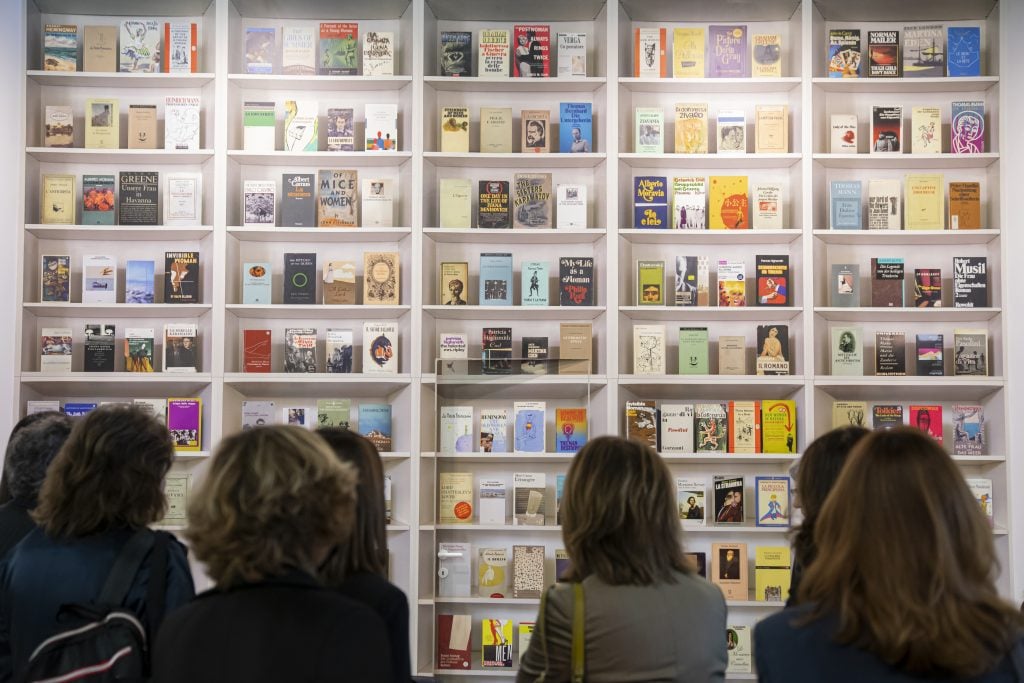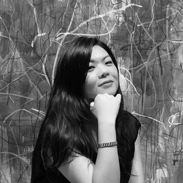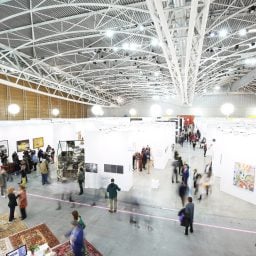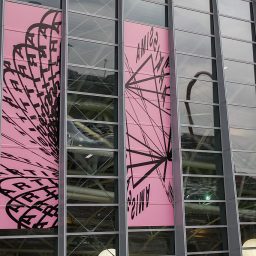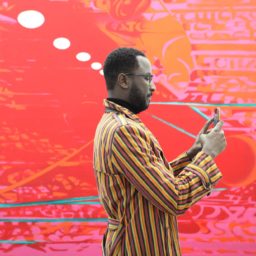Joy was in the air when Lorenzo Giusti and Mouna Mekouar finally saw each other on Thursday’s opening day of Artissima, the Italian contemporary art fair in Turin, Italy.
For two years, Giusti, the director of Galleria d’Arte Moderna e Contemporanea in Bergamo, and Mekouar, a Paris-based curator, have worked together virtually to curate the fair’s Back to the Future special feature, which last year was presented only digitally. When they finally met each other in person yesterday, standing in front of one of their selections—one of Julião Sarmento’s last works before his death this year—it was more than just about seeing the fruit of their effort. It was a jubilant reunion.
Such was the ambience of the first day of the return of the respected Italian contemporary art fair in physical form since the year of chaos amid the pandemic. It was a congregation of art dealers, collectors, friends from the Italian art world—not to mention an assembly of thought-provoking and edgy contemporary artworks.
“Being able to come back, and things are kind of returning to normal, I just appreciate everything,” said the Berlin-based dealer Isabella Bortolozzi, a veteran exhibitor of the fair. “People are just happy to see work in the flesh. People are tired of Zoom meetings. You need to experience art.”
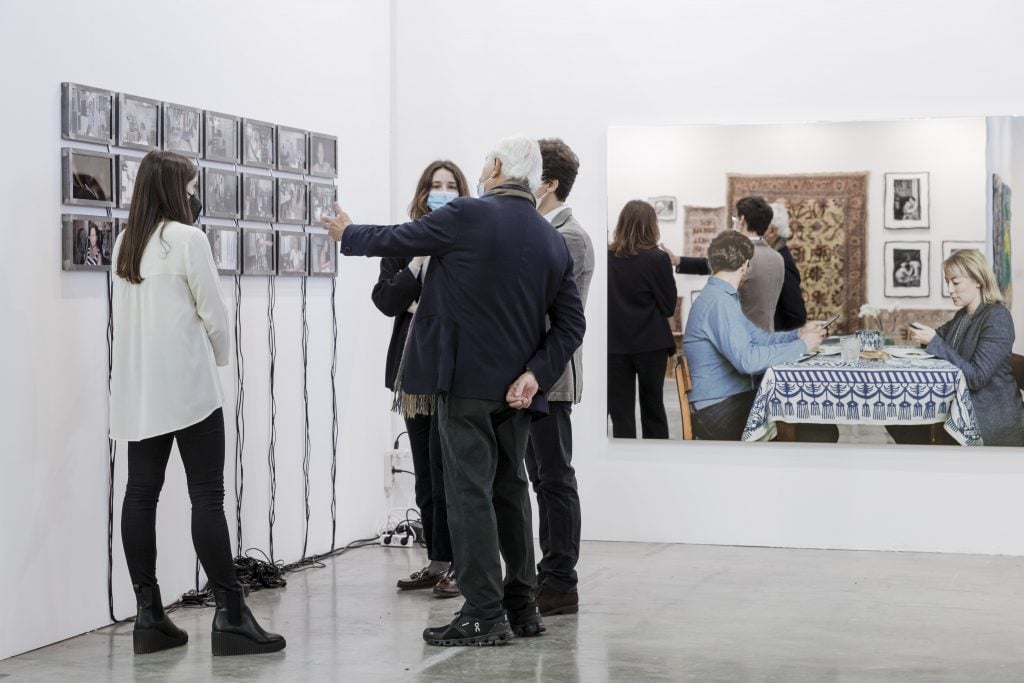
Artissima 2021. Courtesy of Perottino-Piva/Artissima.
The 28th edition of Artissima, which runs through Sunday, November 7 at Oval Lingotto, is divided into seven sub-sectors and hosts a total of 154 galleries from 37 countries, down from 209 galleries in 2019. Travel restrictions and the ongoing rehabilitation of Italy, an early locus of the pandemic, may have created uncertainties for some dealers, particularly those from the United States, said fair director Ilaria Bonacossa. Still, more than half of exhibitors—56 percent—came from outside of Italy, as well as an array of visitors who flew in from abroad.
“The vibe is good. I’m very happy,” Bonacossa told Artnet News. “Many great collectors have come. But the most important thing is that the quality of art is very good. Galleries take risks in presenting their work.”
Galleries can indeed afford to take risks here. Unlike some of the world’s biggest art fairs, Artissima is not only smaller in terms of size. It is essentially owned by the city: run by a company that is affiliated with Fondazione Torino Musei, and the fair’s trademark is jointly owned by Regione Piemonte, Città Metropolitana di Torino and Città di Torino. The booth fees, as a result, are generally more affordable, starting at €4,000 ($4,600). Bonacossa said there were no discounts this year, but the fair has made a one-time exception by allowing galleries to pay by installments. Price points of the works on show range from a few thousand euros to around €30,000 to €40,000 ($34,700 to $46,200).
Among the risk-takers is Gianluca Gentili of the Florence-based gallery Veda. His booth in the Dialogue/Monologue section showcased the politically-charged installation Zero Is My Country, 2021, by the Marseille- and London-based Dominique White. “My presentation intends on making a statement on the artist,” said Gentili.
The fair is an ideal international launchpad for young galleries in the region. “We selected Artissima as our first international fair because of its emphasis on ambitious, curated installations, which is very much aligned with our ethos,” said Alexander Caspari, founder and director of the London-based gallery Encounter, which presented a solo booth by abstract painter Alexis Teplin.
A handful of galleries reported sales on the first day, including the Paris-based 31 Projects, which sold three paintings by South African artist Aviwe Plaatjie to Italian and Asian collectors for around €5,000 ($5,800) each. Belgium’s Dauwens & Beernaert sold works by Loïc Van Zeebroek and Charlotte Vandenbroucke to Museum Voorlinden in the Netherlands at prices ranging from €2,000 to €10,000 ($2,300 to $11,600). Galleria Mazzoli, of Berlin and Modena, sold a painting by Mimmo Paladino for €45,000 ($52,000) to a European collector, while Galerie Urs Meile, of Lucerne and Beijing, sold two small drawings by Mirko Baselgia for just under €10,000 ($11,600) each.
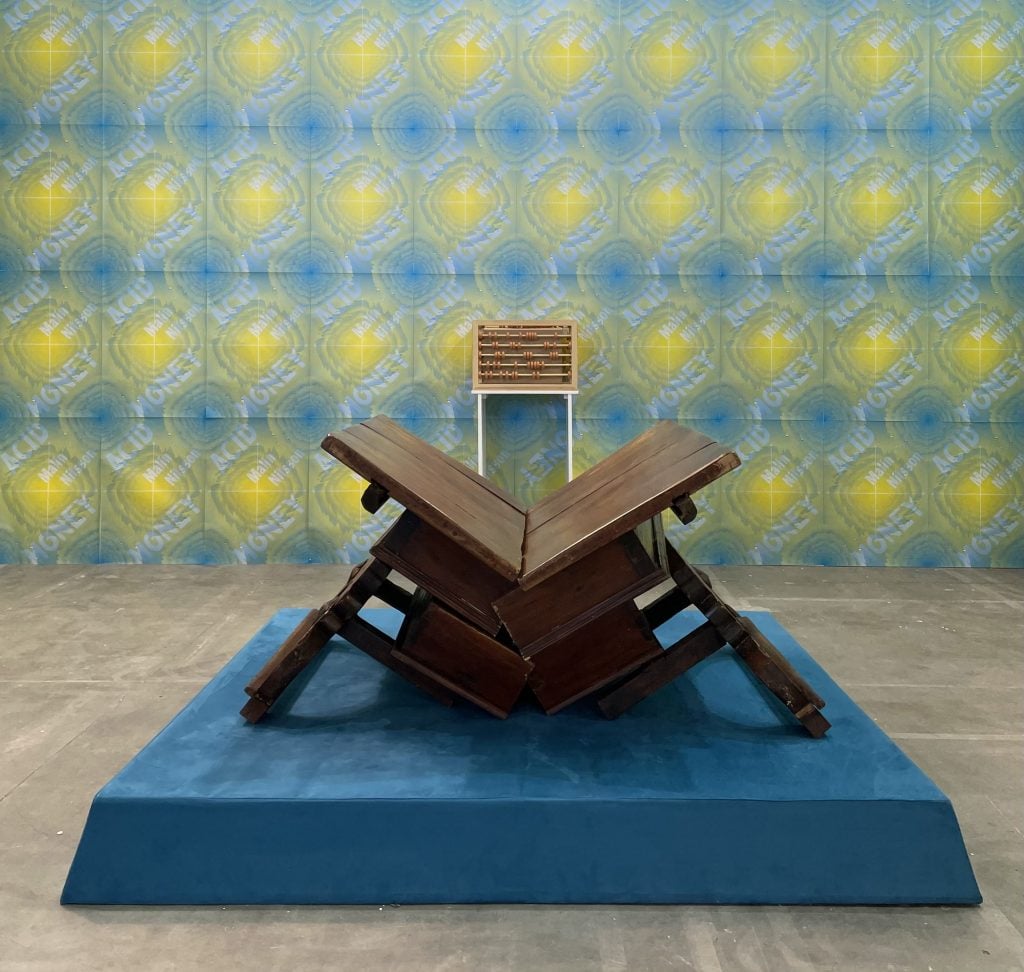
Nome’s presentation of Goldin+Senneby. Photo: Vivienne Chow.
Sales at Artissima, however, follow a very different rhythm, said Alex Mor, director of Mor-Charpentier. The Paris/Bogotá gallery clinched a few initial sales, but he was not impatient. “It’s not an art fair where you sell a lot on the first day like a race. The collectors here take more time. You reconnect with people, have intense and profound conversations. It’s another way of working and it’s special,” Mor said.
The emphasis on curated exhibitions appeals to not only industry players but also to collectors. While Asian buyers were notably thin on the ground, due to travel restrictions, many prominent European names were present. The elegantly dressed mega Italian collector Patrizia Sandretto Re Rebaudengo was seen enthusiastically greeting gallerists and friends during the early hours of the fair before heading off to prepare for the preview of her foundation’s new exhibition and a gala dinner at her house. Lena Baume from Paris, Jonathan Cheung from Hong Kong, Safia El Malqui from Monaco—and, from the U.S., Laurie Ziegler, as well as Tony Podesta—were among those that attended the opening day.
From Belgium, Alain Servais and Eva Ruiz were spotted admiring the booth of the Berlin-based gallery Nome, with a solo presentation that challenged notions of monetary value by the conceptual Swedish duo Goldin+Senneby. Servais told Artnet News that Artissima has always remained in his art calendar, as there he could discover artists and works that wouldn’t be seen at other fairs. “The show is not just about selling, but also getting artists exposure to curators,” he said. “It involves 50 curators. Nobody in the world does that.”
And the curatorial focus means stringent standards. On Sunday morning, the fair’s committee will do a round of evaluation to see which galleries have managed to deliver on the exhibition proposal in their fair applications. Expect a 20 to 30 percent change in the galleries list next year, said Bonacossa. “We want to give as many galleries as possible a chance,” she said.
Artissima runs November 5–7 at Oval Lingotto, Turin, Italy.
